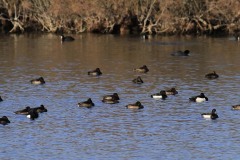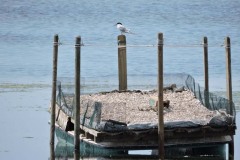The great environmental diversity and reduced human disturbance, limited to the margins of the reserve, favour the presence of a high number of species, with very different ecological requirements.
Of the various animal groups, the most numerous are undoubtedly birds (about 240 species), in particular aquatic ones, among which the various duck species are particularly common in the winter months (Mallard, Gadwall, Pintail, Shoveler, Pochard, Greater Scaup etc.) and grebes. In the spring and summer months the herons (Great White and Little Egret, Grey and Purple Heron) and waders. There are also birds of prey such as the Marsh Harrier and some families of Mute Swans and Greylag Geese. Occasionally the valle is occupied by a varying number of Greater Flamingos.
The highest species count is normally observed in April, during the spring migration, while the greatest number of individual birds is present during the winter months.
Also noteworthy is the presence of mammals including Roe Deer, Wild Boar, Badger, Fox and Hare) as well as amphibians and reptiles (including European Pond Turtle, Tessellated Snake and Grass Snake) and fish species.
Among the unusual species that have increased the wildlife value of the protected area in recent years including the nesting of Black-winged Stilts, Common Terns, Black-headed Gulls and Shelducks and the presence of a group of Greater Flamingos.






















